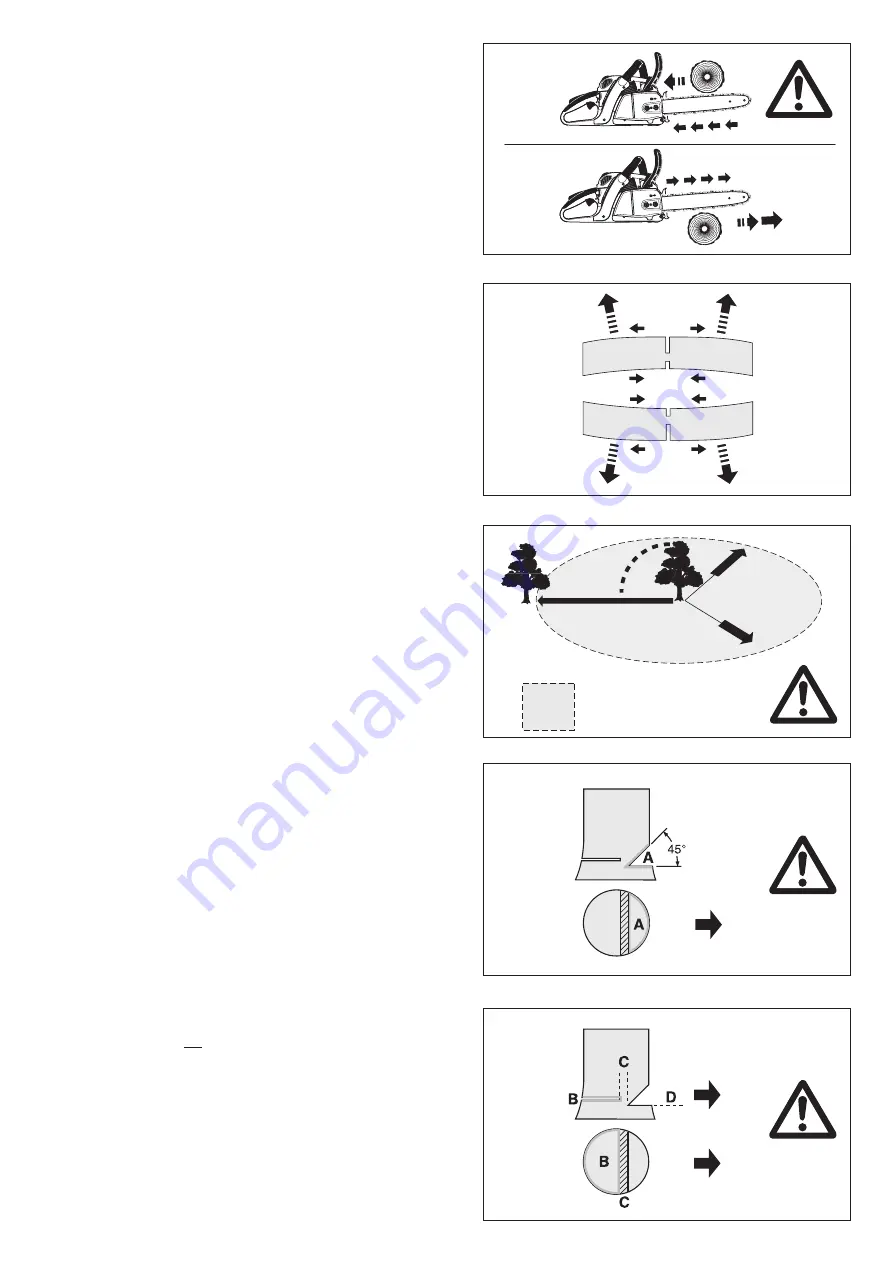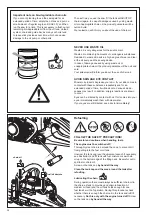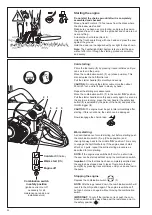
7
B
A
B
15
16
17
18
19
45
o
45
o
2
1
/
2
= cutting down area
- Be careful when cutting splintery wood. Cut pieces of wood
may be pulled along (risk of injuries).
- When cutting with the upper edge of the guide bar, the chain
saw may be pushed in the direction of the user if the chain
gets clamped. For this reason use the lower edge of the bar
whenever possible. The chain saw will then be pushed away
from you (15).
‑ If the timber is under tension (16), first cut the pressure side
(A). Then the crosscut can be performed on the tension side
(B). Thus clamping of the guide bar can be avoided.
- At the end of the cut the weight of the chain saw will cause it
to swing through, since it is no longer held by the cut. Hold it
firmly to control this.
CAUTION:
People felling trees or cutting of branches must be
specially trained. High risk of injuries!
- When cutting of branches, the chain saw should be
supported on the trunk. Do not use the end of the bar for
cutting (risk of kickback).
- Be aware of branches under tension. Do not cut free
branches from below.
- Never perform detensioning cuts while standing on the trunk.
-
Before cutting down a tree ensure that
a) only those people are within the working area which are
actually involved in cutting down the tree.
b) every worker involved can withdraw without stumbling
(the people should withdraw backwards in a diagonal
line, i. e. at a degree of 45°).
c) the bottom part of the trunk is free from foreign objects,
underbrush and branches. Make sure to have a safe
footing (risk of stumbling).
d) the next working place is at least 2 1/2 tree lengths away
(17). Before cutting down the tree check the direction
of fall and make sure that there are neither people nor
objects within a distance of 2 1/2 tree lengths.
- Judging the tree:
Direction of hanging - loose or dry branches - height of the
tree - natural overhang - is the tree rotten?
- Take into account the direction and speed of the wind. If
strong gusts are occurring, do not do any felling.
- Cutting the roots:
Start with the strongest root. First do the vertical and then the
horizontal cut.
- Notching the trunk
(18, A):
The notch determines the direction of fall and guides the
tree. The trunk is notched perpendicular to the direction of
fall and penetrates 1/3 -1/5 of the trunk diameter. Perform the
cut near the ground.
- When correcting the cut, always do so over the whole width
of the notch.
-
Cut down
the tree (19, B) above the bottom edge of the
notch (D). The cut must be exactly horizontal. The distance
between both cuts must be approx. 1/10 of the trunk
diameter.
- The
material between both cuts
(C) serves as a hinge.
Never cut it through, otherwise the tree will fall without any
control. Insert felling wedges in time.
- Secure the cut only with wedges made of plastic or
aluminium. Do not use iron wedges. If the saw hits an iron
wedge the chain can be seriously damaged or torn.
- When cutting down a tree always stay sidewards of the
falling tree.
- When withdrawing after having performed the cut, be alert
for falling branches.
- When working on sloping ground the user of the chain saw
must stay above or sidewards of the trunk to be cut or the
tree already cut down.
- Be alert for trunks which may roll towards you.
Summary of Contents for EA3501F
Page 39: ...39 ...








































